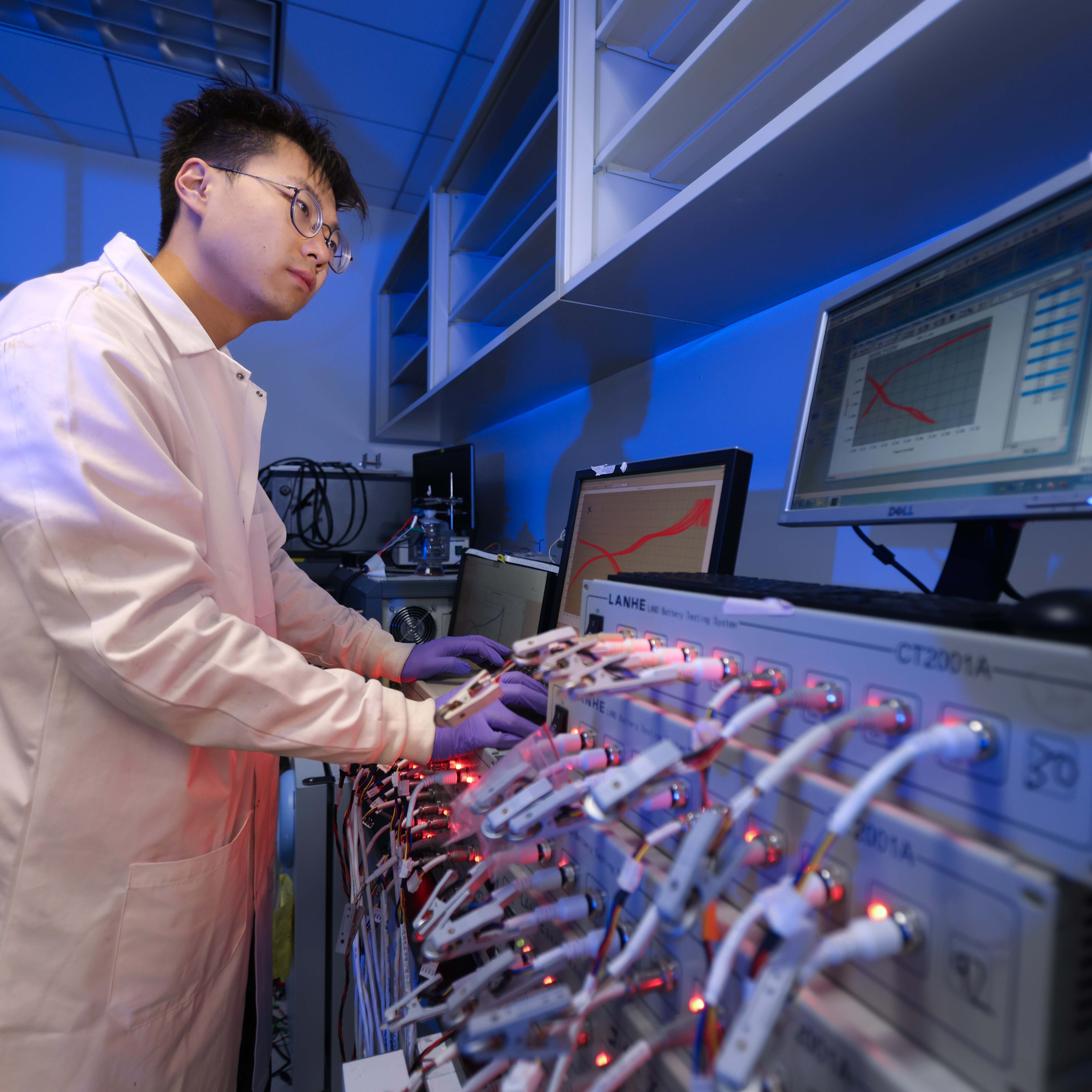News Story
Making Your Water Bottle Safer

Professor Kyu Yong Choi.
"There is no question about the toxicity of BPA...So the question for us is whether we can prevent it from being in your bottle in the first place."
- Professor Kyu Yong Choi.
The culprit in this case of widespread public health concern is bisphenol A (BPA), a chemical used in the manufacture of plastics and resins. You may have heard about it in the news, and you may have purchased products sporting a "BPA-Free!" label.
Over time, or under high temperatures, BPA molecules may be released from a plastic container into the drink or food it contains. The concern over BPA stems from its potential long-term health effects when it is ingested. The issue has been hotly debated: while the U.S. Food and Drug Administration (FDA) has declared it safe in the amount consumers might be exposed to1, the National Institutes of Health (NIH) has expressed some concern2.
One of the materials affected by BPA fears is polycarbonate, a plastic polymer that is used to make many common items including water bottles, eyeglasses, sports equipment, DVDs, windows, and the cases that protect our iPods. "Polycarbonate is the perfect material for these applications because of its high-impact strength, resistance to shattering, transparency, and light weight," says Choi. "It's also heat-resistant enough to be sterilized without melting."
But BPA is one of its two ingredients, and some manufacturers have been compelled to switch to less versatile plastics as consumers shy away from products containing it. To Choi, it seemed unfortunate to have to stop using such an effective material.
"Everyone was talking about the toxicity of BPA, but no one was talking about reducing it in the manufacturing process," he says.
Choi and his group have published the first theoretical mathematical model and simulation study that demonstrates how BPA could be significantly reduced in polymers during the manufacturing of products like water bottles and milk jugs. "It's important to stress during manufacture," Choi explains. "We can and do currently remove BPA from polycarbonate, but in another step, only after it's made. That process is energy-intensive and increases costs."
Polycarbonate is made of BPA and another chemical, diphenyl carbonate (DPC). The two ingredients bond with each other in a controlled chemical reaction, but not all of the material ends up being used. "Polycarbonate itself is not dangerous," says Choi, "but because of the nature of the production chemistry, a very tiny fraction of BPA doesn't react, and remains in the final product as a residue. With something like a laptop case it's no problem, but if it's in something you eat or drink from it could be."
Using what he describes as a "sophisticated mathematical modeling technique," the group's published theory explains how to design the chemical reaction conditions to maximize the consumption of BPA in the production of polycarbonate, so a much smaller quantity of it will be left in the final product.
"There is no question about the toxicity of BPA," says Choi. "If you get a large dose, that wouldn't be good for your health. So the question for us is whether we can prevent it from being in your bottle in the first place."
Choi and his colleagues are currently seeking private or public funding that will enable them to move on to experimental verification of their theory, and continue research that they believe could have a significant impact in polycarbonate technology. Anyone interested in further information about the project may contact him at choi@umd.edu.
For More Information:
Yuesheng Ye and Kyu Yong Choi. "Reduction of Bisphenol A Residue in Polycarbonates in a Two-Stage Step-Growth Polymerization Process." Ind. Eng. Chem. Res., 2009, 48 (9), 4274-4282.
Visit Professor Choi's web site »
Visit the Department of Chemical and Biomolecular Engineering web site »
References:
1. For example, see: "BPA (Bisphenol-A)," statement of Norris Alderson, Ph.D., Associate Commissioner for Science, delivered before the Subcommittee on Consumer Affairs, Insurance, and Automotive Safety and the Senate Committee on Commerce, Science & Transportation on 14 May, 2008. www.fda.gov/NewsEvents/Testimony/ucm115239.htm.Retrieved 20 October 2009. [back to article]
2. For example, see: "Since You Asked—Bisphenol A: Questions and Answers about the National Toxicology Program's Evaluation of Bisphenol A." National Institute of Environmental Sciences, National Institutes of Health. www.niehs.nih.gov/news/media/questions/sya-bpa.cfm. Retrieved 20 October 2009. [back to article]
Published October 27, 2009









